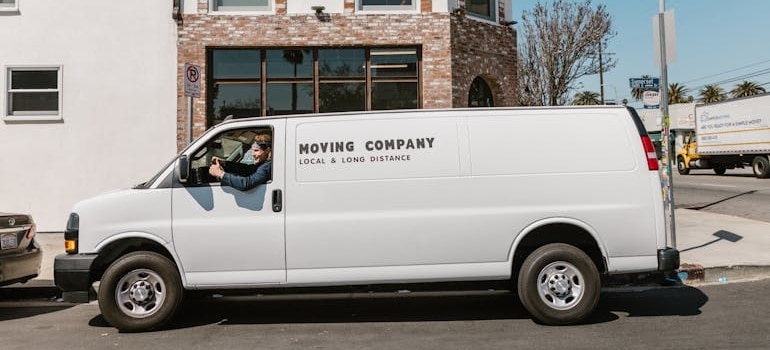Most people won’t wait more than a few seconds for a quote and they shouldn’t have to. Moving companies need to offer fast, mobile-friendly, and seamless online experiences. A modern moving estimate form does more than collect details. It calculates quotes instantly, syncs with your CRM, and helps convert visitors into paying customers. Movers Development will show you how to build a high-performing estimate form that meets today’s user expectations. If you want more leads and faster bookings, this is where to start.
What is the purpose of having a moving estimate form?
A well-built moving estimate form helps you capture leads and close jobs fast. In 2025, users expect a response in seconds. Most visitors bounce if they don’t get a quote in under 30 seconds. If your form is slow or confusing, you’ll lose them.
Today’s top-performing moving companies treat their estimate form as a conversion tool, not just a way to collect data. It’s your chance to create a smooth experience that gives people confidence in your service. You should also know how to avoid lowball estimates. A strong form helps prevent vague pricing by collecting key details upfront and giving users a clear breakdown of what to expect. The purpose of your moving estimate form is not just to gather contact info. It’s to deliver value right away, show that you’re professional, and give people a reason to choose your company over others.

The overall functionality
A moving estimate form isn’t useful if it doesn’t work the way users expect. No matter how good it looks, if it’s slow, confusing, or buggy, people won’t finish it — and you’ll miss out on leads.
Your form should do more than collect information. It should act as part of an automated system that improves speed, accuracy, and follow-up. In 2025, that means building a form that’s:
- Easy to use on all devices, especially mobile
- Integrated with your CRM so it can create new leads instantly
- Connected to an online moving costs calculator form that gives users instant pricing based on what they enter
- Designed to trigger workflows, like sending confirmation emails, assigning leads to your team, or starting automated text responses
These features all tie back to one thing: user experience. And that experience needs to be fast, simple, and reliable. Instead of building from scratch, use proven moving company software that connects your form with your full system. It’s the fastest way to improve performance and conversions.
The design and responsiveness of the form itself
A great moving estimate form isn’t just about what it asks. It’s about how it looks and works across all devices. In 2025, your form must be mobile-first and meet accessibility standards. If it’s not built for thumbs and screen readers, you’re losing leads.
That’s why ADA compliance and smart mobile design are important. An ADA compliant moving company website helps every visitor interact with your form easily. Add large, easy-to-tap fields, clear labels, and fast load speeds.
Multi-step forms still work well. But today, they need to be smoother, faster, and adapted for mobile use. Breaking the process into 2 or 3 clean steps improves focus and reduces drop-offs. Each step should take just a few seconds to complete. Here’s a layout that works well:
- Step 1: Where and when — moving to/from, move date, size of move
- Step 2: What’s being moved — basic inventory or checkboxes
- Step 3: Who’s moving — name, email, phone
This structure personalizes the quote, loads fast, and gives people just enough to feel in control without feeling overwhelmed. It’s also highly effective for generating moving leads for companies that want more conversions from mobile and desktop traffic. Design your moving estimate form like a modern app. It should be clean, fast, and built to convert on any screen.

Making the form stand out
Your moving estimate form should never blend into the background. It needs to be one of the most noticeable elements on your site, without disrupting the user experience. In 2025, this means using modern UX features that keep the form visible and easy to reach. Sticky call-to-action buttons, floating quote widgets, or slide-in forms triggered by scroll behavior can boost engagement without annoying the user. These small upgrades keep the form accessible without pushing it too aggressively.
Another effective method is progressive disclosure. Instead of showing all form fields at once, reveal them step by step as the user interacts. This keeps the experience clean and reduces friction. You can start with a simple question like “Where are you moving?” and expand the form from there.
If you want to see how this looks in action, consider adding an instant moving quote calculator to your homepage. It gives users a fast, interactive way to estimate costs without needing to call or wait. Make sure the design matches your website’s branding: colors, fonts, and spacing should all feel consistent. A clean and professional look builds trust. If your moving estimate form is hard to find, overloaded with fields, or looks outdated, users will bounce. Smart design keeps them engaged and moves them closer to booking.
The positioning and presentation of your moving estimate form
Where you place your moving estimate form directly affects how many people use it. The best spot is always where users can see it without having to scroll. That’s why the hero section, the top of your homepage and service pages, is your first priority. But don’t stop there. Place your form or a clear CTA in multiple areas: mid-page banners, footers, or as a floating widget that stays visible while users scroll. On mobile, consider a sticky button that keeps the option to “Get a Quote” within easy reach.
Just as important as placement is how the form fits into your design. It shouldn’t feel like a pop-up or third-party add-on. The layout, colors, and fonts should match the rest of your site so it feels like a natural part of the experience.
These choices reflect the importance of user experience. A form that’s easy to access, clearly visible, and smoothly integrated into your layout will always outperform one that’s hidden, clunky, or inconsistent with your design.
Don’t forget about the Call to Action (CTA)
Your moving estimate form is only as effective as the call to action that supports it. A well-placed call to action helps users take the next step without confusion. It should be clear, visible, and direct — especially on mobile. Use CTA phrases like “Get My Estimate,” “Check My Moving Cost,” or “Start My Quote” depending on the tone of your site. These feel personal and results-driven.
Place your CTA in the hero section, mid-page, footer, and as a sticky button on mobile devices. Repeating the action in different spots gives users more chances to engage. A strong CTA keeps your moving estimate form working at all times, not just when someone reaches the bottom of a page.

You make the rules at the end of the day
You can tailor your moving estimate form to fit your company’s brand and process, but doing it all yourself can waste time and create problems. Forms that aren’t optimized for mobile, speed, or automation often lead to missed leads and poor conversions. Instead, consider working with experts who offer professional web design and SEO specifically for moving companies. You’ll get a form that looks good and functions as part of your complete marketing system. Ready to improve your estimate form? Contact us for a free consultation and see how a professionally built moving estimate form can help you book more jobs and grow your business.






